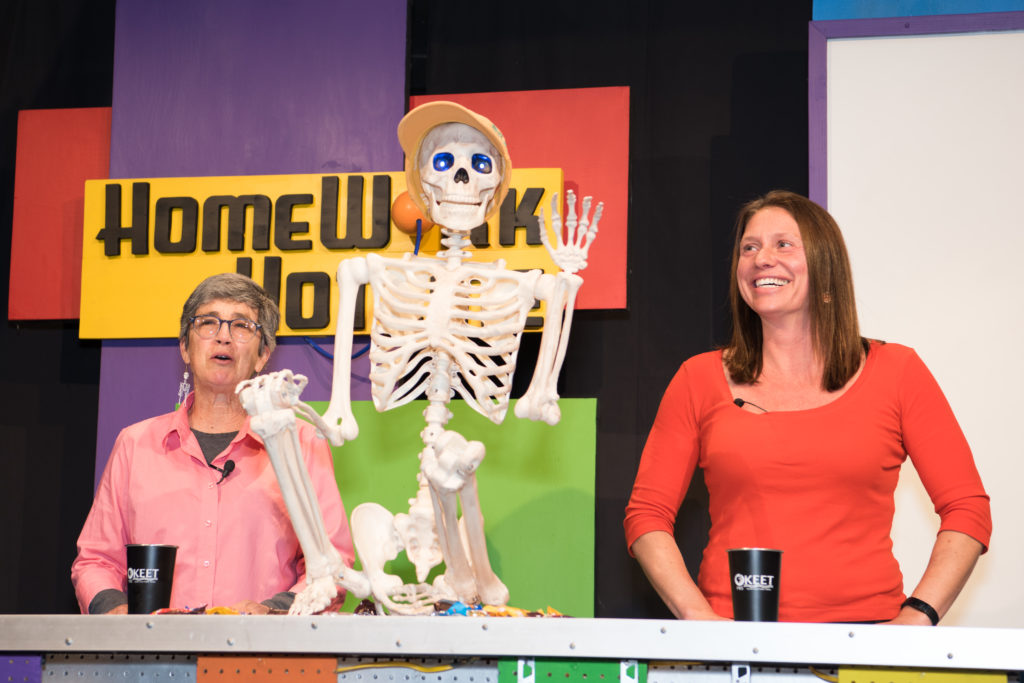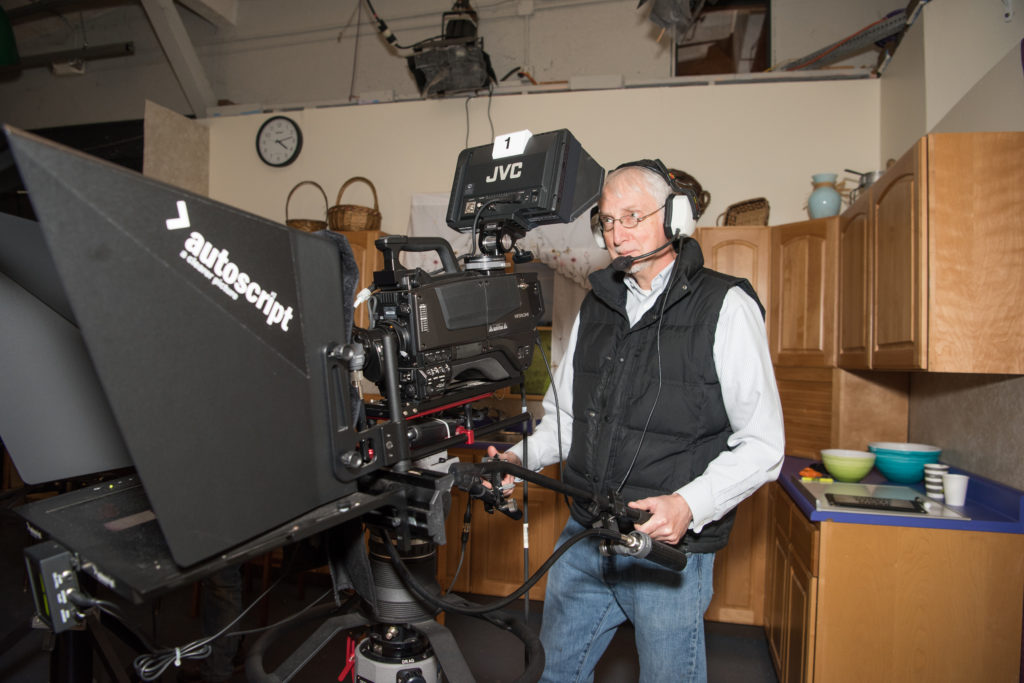
What is the strongest bone in the human body?
How many bones are in the human skull?
What is the difference between PEMDAS and GEMA?
Questions like these are the focus of Homework Hotline, a live TV show in Humboldt County where students query teachers and receive instant, detailed answers. (You can find the answers at the end of this article.) Filmed in the KEET TV station in Eureka, an affiliate of PBS, the half-hour show airs Tuesdays and Thursdays at 4:30 p.m. during the school year. The broadcast reaches viewers throughout rural Humboldt and Del Norte counties.
Today’s hosts are Amy Taylor, who teaches math at Sunny Brae Middle School and belongs to the Arcata Elementary Teachers Association, and Pam Halstead, who was Taylor’s favorite teacher at Fortuna High School back in 1994. Halstead, a former member of the Fortuna Union High School Teachers Association, retired two years ago, except for TV appearances. (This year, there are six to eight retired and current educators who will take turns hosting, including Alysha Simoni, a member of Eureka Teachers Association.)
Taylor and Halstead have been hosts since the show began 15 years ago. They banter about science and math with ease and share a strong on-screen chemistry that has built them a loyal following.

Nearly 800 episodes of Homework Hotline have been filmed, says producer Sam Greene, and the show is very popular. It even has local sponsors.
“I’m not sure of the viewership because we don’t subscribe to a rating service since we’re public television, but viewers like it,” says Greene, who produced a similar show in Colorado before pitching the concept to KEET TV. “I attribute that to these teachers, who always make the show interesting. They bring in lots of experiments, animals and guests, including former students.”
Today’s guest is not a former student. It’s Mr. Bones, a skeleton with glowing eyes who provides great visuals for questions and answers about bones and the human body.
“ It’s a great feeling to help students when they are stuck, and it’s amazing to be able to reach so many people beyond my own classroom.”
— Amy Taylor, Arcata Elementary Teachers Association
Making it easy to answer questions is the set’s whiteboard, which the hosts use frequently to illustrate a point. Not all of those asking questions are among the intended audience of K-12 students; some are adults who want answers to something they’ve always been curious about.
Taylor was only stumped once on the air, when a viewer submitted calculus questions. “I’d been teaching middle school math and hadn’t done calculus recently,” she explains. “Most math questions are about decimals, fractions and solving equations.”
Taylor was named Teacher of the Year for Humboldt County in 2012, and Halstead won the Jean Olsen Career Achievement Award in 2017, which honors teachers in Humboldt County. The duo say they love sharing what they know in front of a TV audience — and helping students find the right answers.
Questioners are identified by their name and school on the show. In the old days, viewers would call the studio, and then a staffer would call them back before allowing them to speak on air to make sure it wasn’t a crank call. Now, with questions submitted online, that worry is eliminated.
The two earn $35 per show, which they refer to as “gas money” to drive there. But money is not the motivation.
“I love sharing information and science, and knowing I am helping the students who are watching,” says Halstead.
“Sometimes students are so happy to receive help they are giddy,” says Taylor. “It’s a great feeling to help students when they are stuck, and it’s amazing to be able to reach so many people beyond my own classroom.” You don’t have to live in Humboldt County to catch an episode of Homework Hotline. It can be streamed via YouTube from the station’s website.
Answers:
- The strongest bone is the femur (thighbone).
- There are 22 bones in the human skull.
- Both are acronyms to remember the order of operations when solving math problems. PEMDAS stands for Parentheses, Exponents, Multiplication, Division, Addition, Subtraction; GEMA stands for Grouping, Exponents, Multiplication, Addition. (Some readers may remember a mnemonic phrase for PEMDAS: Please Excuse My Dear Aunt Sally.
The Discussion 0 comments Post a Comment